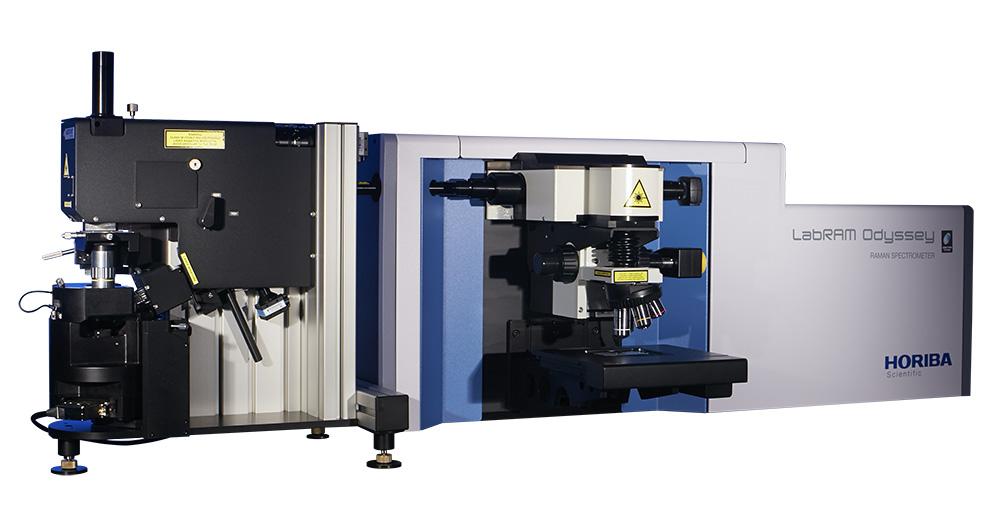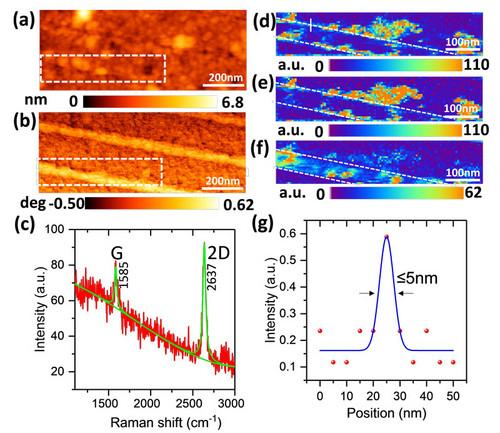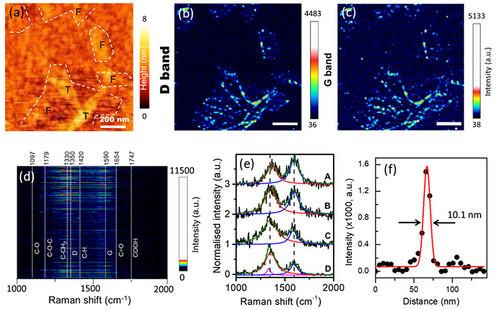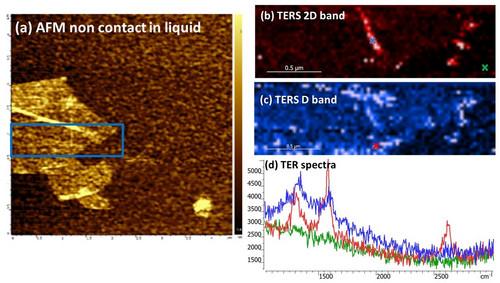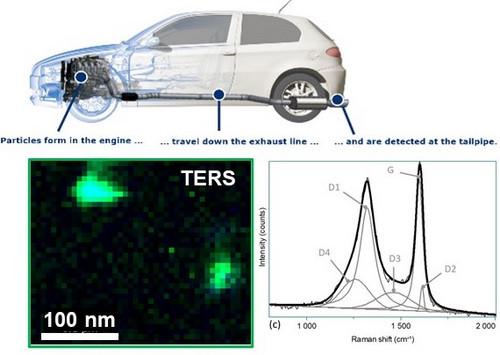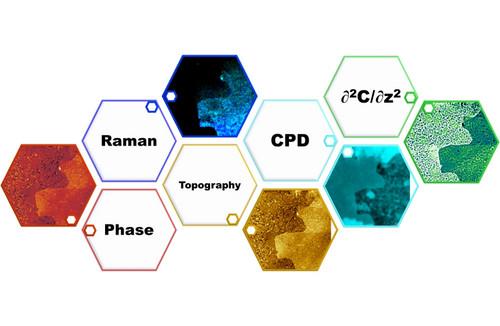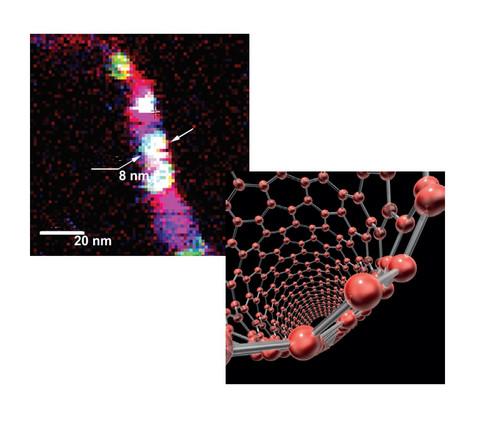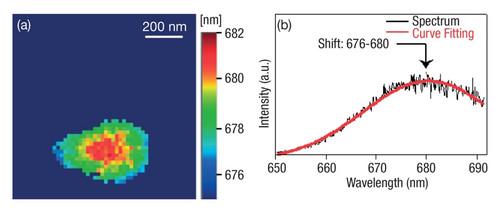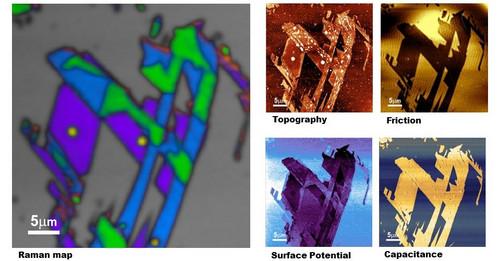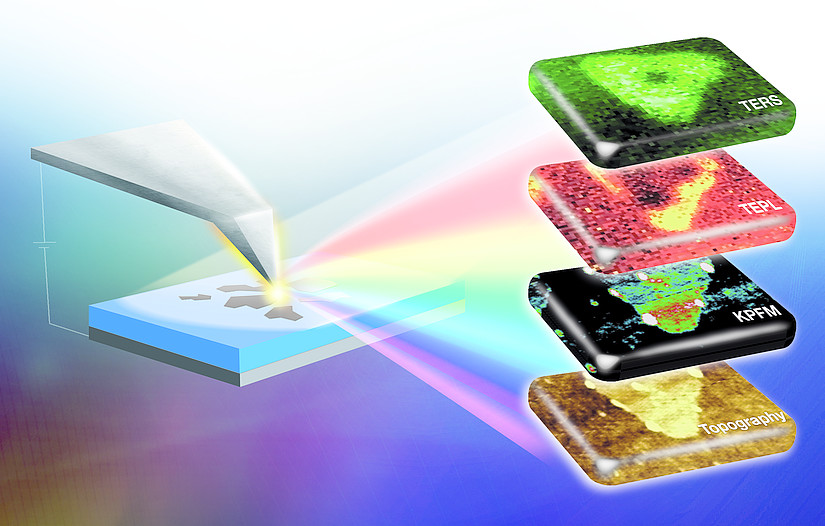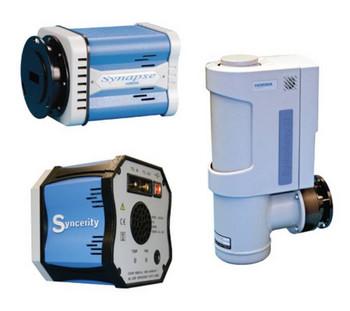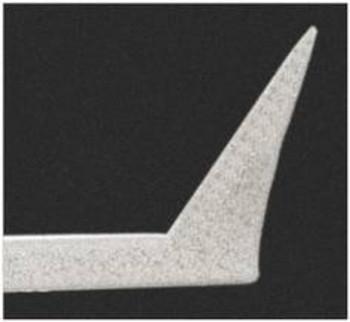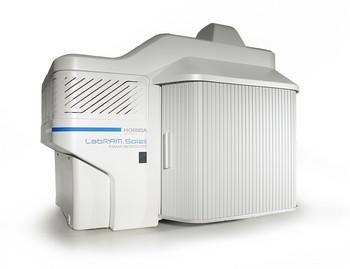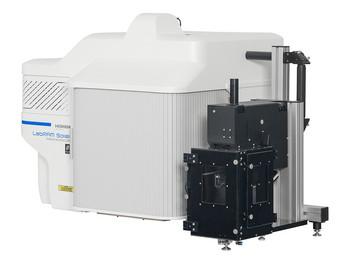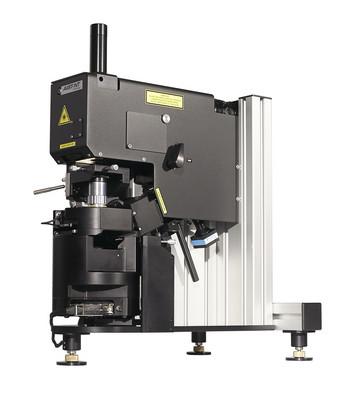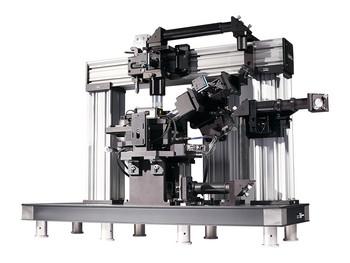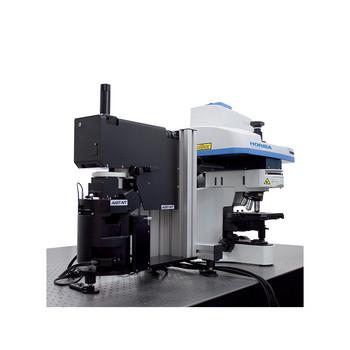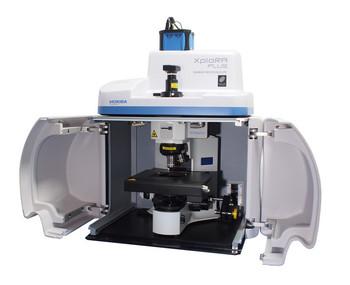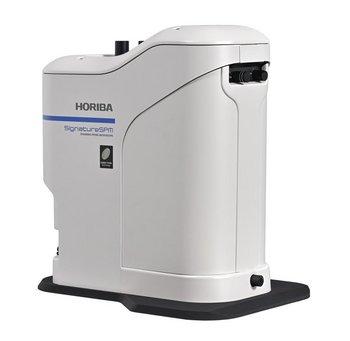
Scanner et base SmartSPM
Plage de balayage d'échantillon : 100 µm x 100 µm x 15 µm (± 10 %)
Type de balayage par échantillon : Non-linéarité XY 0,05 % ; non-linéarité Z 0,05 %
Bruit : 0,1 nm RMS dans la dimension XY sur une largeur de bande de 200 Hz avec les capteurs capacitatifs activés ; 0,02 nm RMS dans la dimension XY sur une largeur de bande de 100 Hz avec les capteurs capacitatifs désactivés ; < 0,04 nm RMS dans la dimension Z sur une largeur de bande de 1 000 Hz avec le capteur capacitatif
Fréquence de résonance : XY : 7 kHz (sans charge) ; Z : 15 kHz (sans charge)
Mouvement X, Y, Z : contrôle numérique en boucle fermée pour les axes X, Y, Z et plage d'approche Z motorisée 18 mm
Taille d'échantillon : 40 x 50 mm max., épaisseur 15 mm
Positionnement des échantillons : plage de positionnement motorisé des échantillons 5 x 5 mm
Résolution de positionnement : 1 µm
Tête AFM
Longueur d'onde du laser : 1 300 nm, sans interférence avec le détecteur spectroscopique
Bruit du système d'enregistrement : jusqu'à < 0,1 nm
Alignement : alignement entièrement automatisé du levier et de la photodiode
Accès à la sonde : libre accès à la sonde pour des manipulateurs et des sondes externes supplémentaires
Modes de mesure SPM
AFM contact dans l'air (en milieu liquide en option) ; AFM contact intermittent dans l'air (en milieu liquide en option) ; AFM non-contact ; imagerie de phase ; microscopie à force latérale (LFM) ; modulation de force ; AFM conductrice (en option) ; microscopie à force magnétique (MFM) ; sonde de Kelvin (microscopie à potentiel de surface, SKM, KPFM) ; microscopie capacitive et à force électrique (EFM) ; mesures de courbe de force ; microscopie à force piézoélectrique (PFM) ; nanolithographie ; nanomanipulation ; STM (en option) ; cartographie du photocourant (en option) ; mesures de la caractéristique volt-ampère (en option)
Modes de spectroscopie
Imagerie et spectroscopie confocales Raman, de fluorescence et de photoluminescence
Spectroscopie Raman exaltée par effet de pointe (TERS) en modes AFM, STM et force de cisaillement
Photoluminescence exaltée par effet de pointe (TEPL)
Microscopie et spectroscopie optiques en champ proche (NSOM/SNOM)
Unité AFM conductrice (en option)
Plage de courant : 100 fA ÷ 10 µA ; 3 plages de courant (1 nA, 100 nA et 10 µA) commutables par logiciel
Accès optique
Possibilité d'utiliser simultanément un objectif plan apochromatique supérieur et latéral : jusqu'à 100x, NA = 0,7 par le dessus ou le côté ; jusqu'à 20x et 100x simultanément
Scanner d'objectif piézoélectrique en boucle fermée pour un alignement laser spectroscopique ultrastable à long terme : plage 20 µm × 20 µm × 15 µm ; résolution : 1 nm
Spectromètre
Micro-spectromètre LabRAM Odyssey haute résolution entièrement automatisé, fonctionnant comme un microscope micro-Raman autonome
Gamme de longueurs d'onde : de 50 cm-1 à 4 000 cm-1 ou jusqu'à 10 cm-1 avec l'option de filtre ultra basse fréquence (ULF)
Réseaux : différents réseaux de 150 t/mm à 3 600 t/mm ; 2 réseaux sur tourelle contrôlée par ordinateur, facilement interchangeables, montage cinématique
Conception optique : spectrographe achromatique et optique de couplage achromatique
Automatisation : fonctionnement entièrement motorisé, contrôlé par logiciel
Détection
Gamme complète de détecteurs CCD, d'EMCCD et de détecteurs infrarouges : barrette de détecteurs InGaAs, détecteurs monocanaux étendus InGaAs, InSb, CdTe, etc.
Sources laser
Longueurs d'onde : gamme complète de longueurs d'onde allant du DUV (229 nm) à l'IR (jusqu'à 1064 nm)
Longueur d'onde standard : 532 nm, 638 nm, 785 nm
Automatisation : commutation entièrement automatisée des lasers et des filtres pour un maximum de 3 lasers simultanés ; sélection de la polarisation du laser et options d'analyse spectrale pour toutes les longueurs d'onde
Logiciels
Pack logiciel intégré avec SPM complet, spectromètre et outil de contrôle d'acquisition de données, comprenant une suite d'analyse et de traitement des données spectroscopiques et SPM (adaptation, déconvolution et filtrage de spectre inclus). Des modules en option proposent une suite d'analyse univariée et multivariée (PCA, MCR, HCA, DCA) et des fonctionnalités de détection de particules et de recherche spectrale.
